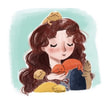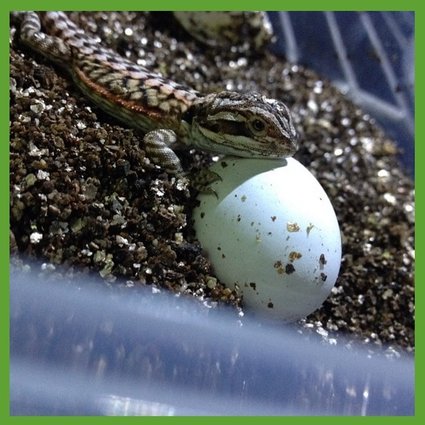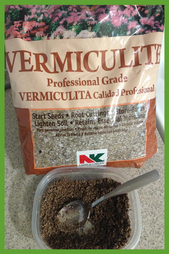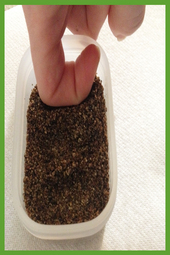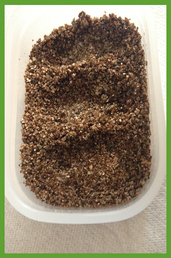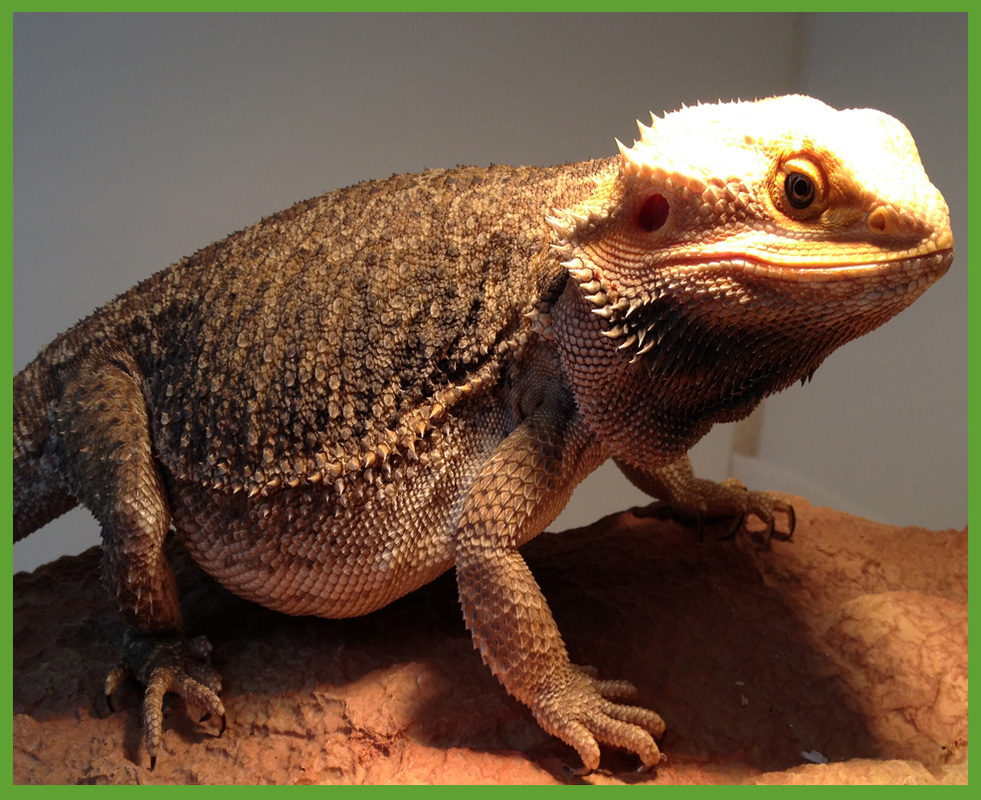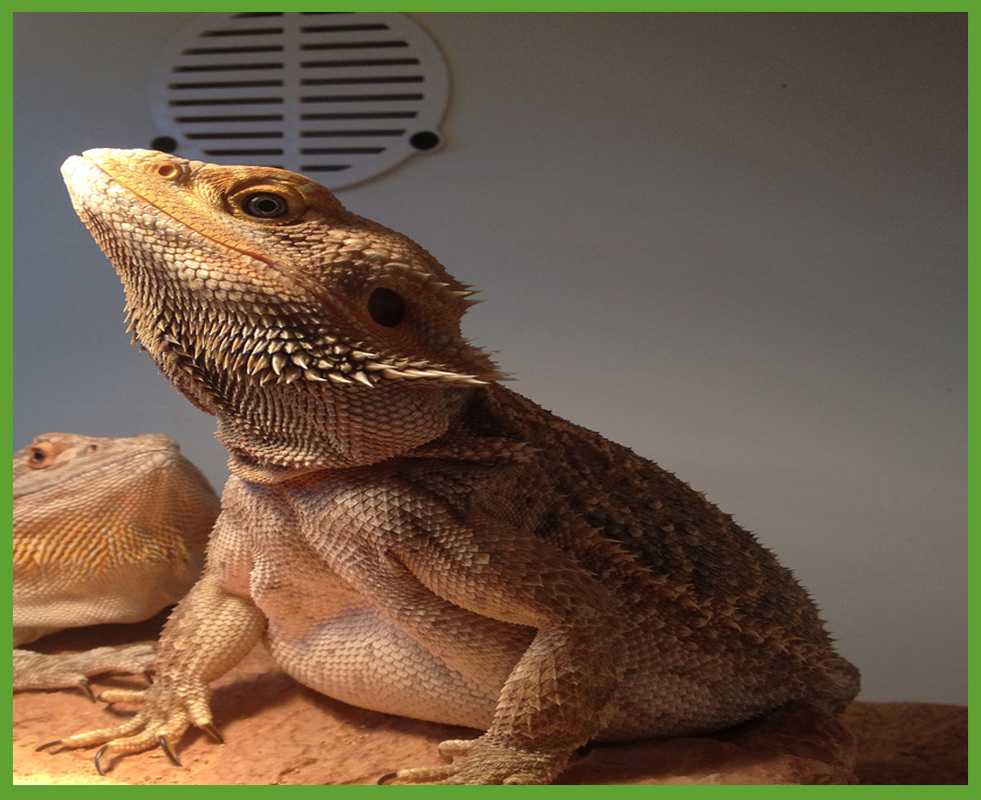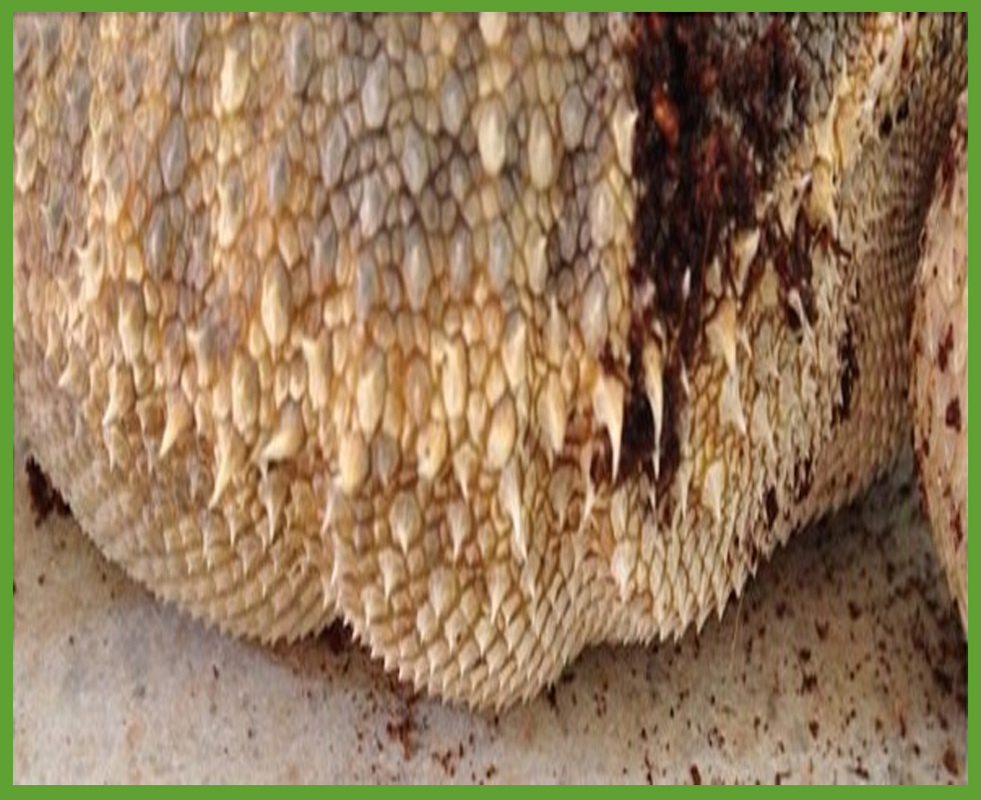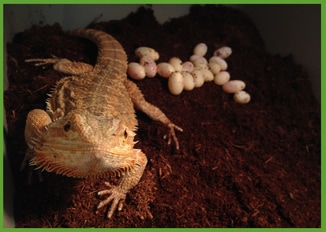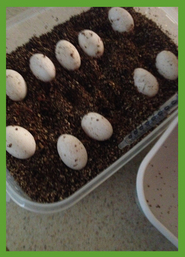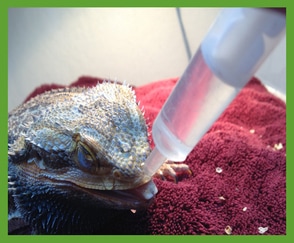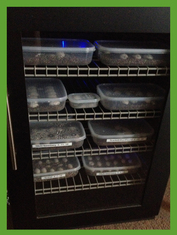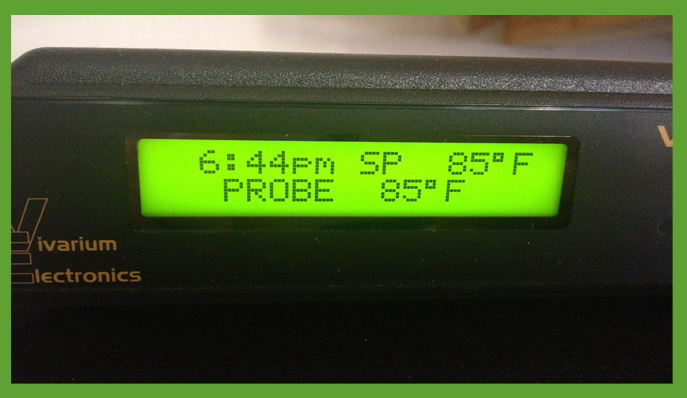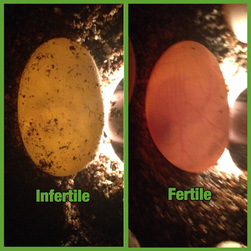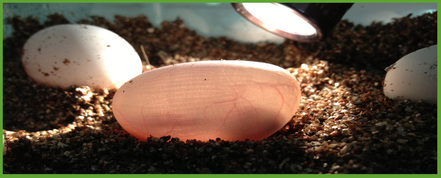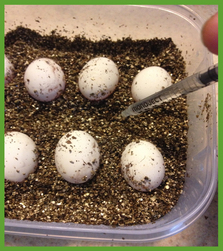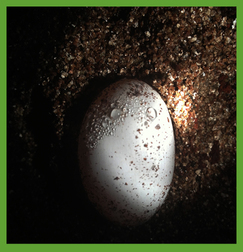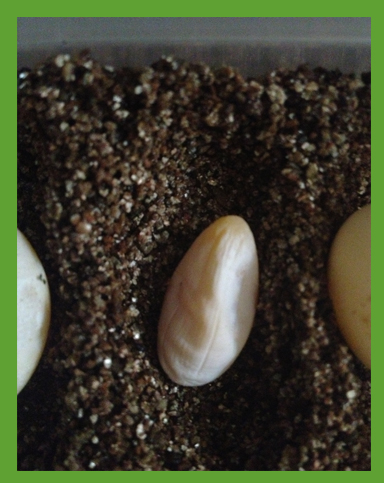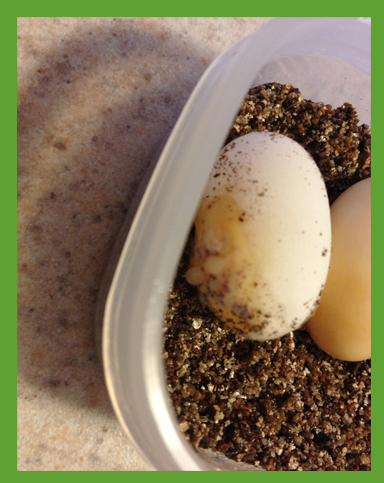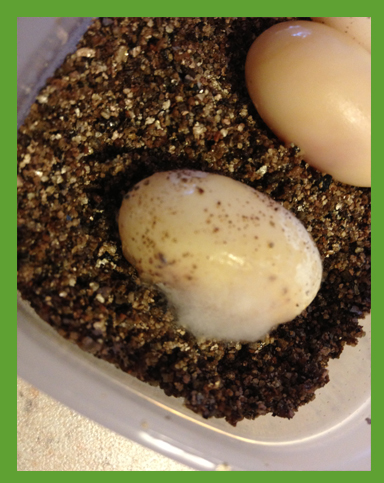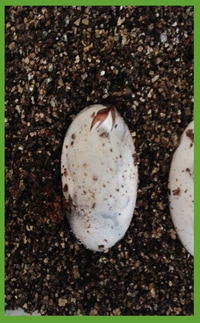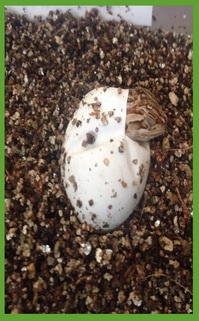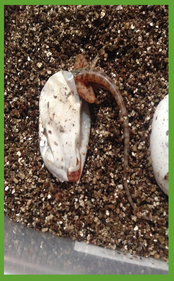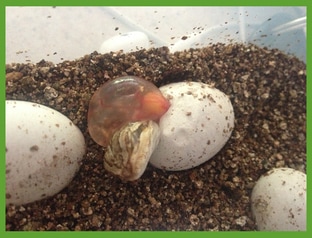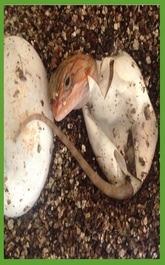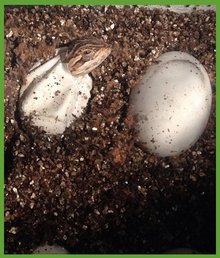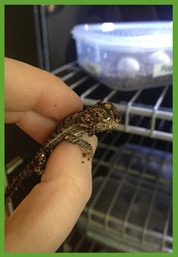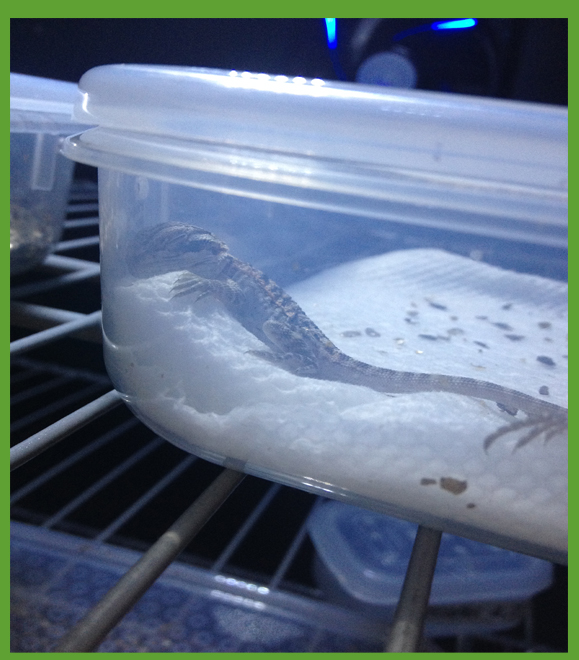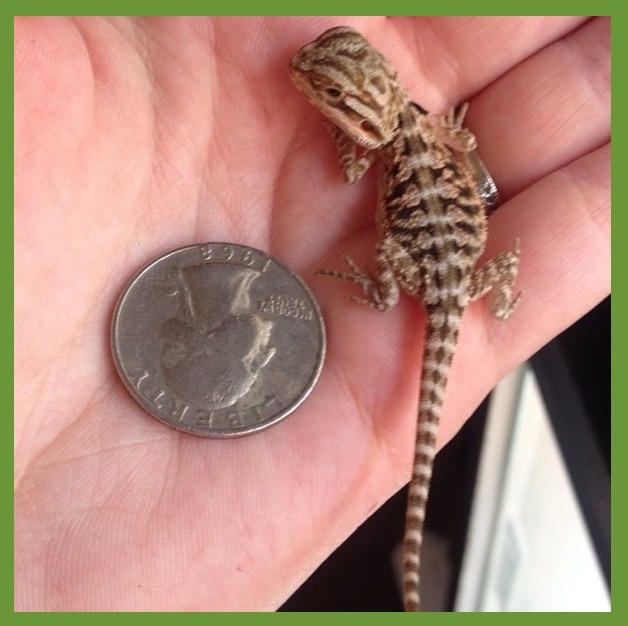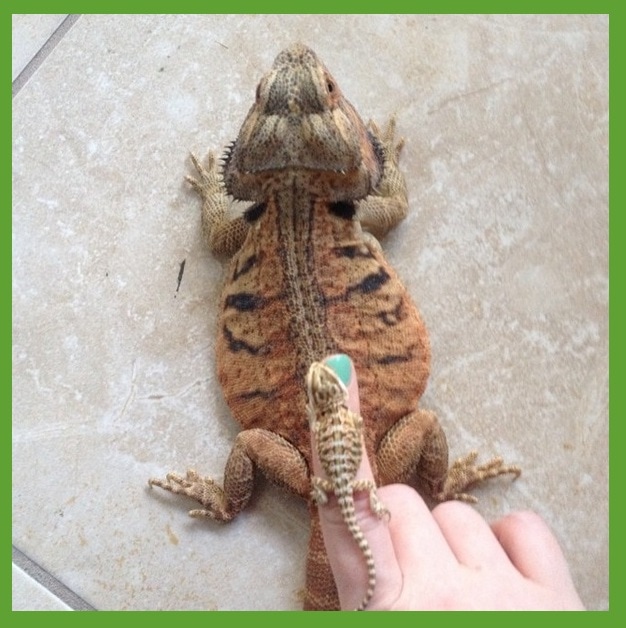Egg Care
Planned Dragon Parenthood
Be Responsible! If you are planning to mate your dragons then be prepared ahead of time. Know that your dragon could lay over 210 eggs, which means 1210 baby dragons to house and feed. You also need an incubator with tubs and substrate in order for the eggs to survive. The baby dragons all need proper lighting and lots of food and they grow fast. Baby dragons also will fight and you must have enclosures to separate these trouble makers into. As well you should never house different clutches in the same enclosure as they are different sizes and the bigger dragons will attack and sometimes try to eat the younger ones. If you do not have the space, time or funds to do all of these things then please DO NOT MATE YOUR DRAGONS. If you do, or are just curious then read on. Baby dragons are cute but they are a lot of work. Get your Egg tubs and bedding made up once your female hits 20 days into her pregnancy. Get the tubs in the incubator so the bedding is the proper temperature and moisture level from the moment the eggs go in. Your containers should have firm fitting lids and have several small air holes. The bedding for the egg tubs we use is a type of soil called Vermiculite (found at most hardware stores), it retains moisture. Wash your hands well, pack the bedding tightly and using your finger bend it slightly and push into the bedding to make a slight indent for each egg. Once you place and egg inside gently pat the bedding around the egg so it stays in place bit don't make it too deep or when the dragon hatches it can suffocate.
Moving the egg after 3 days could cause the embryo to detach from the egg wall and die, so handle them with care and NEVER rotate the eggs. The Vermiculite must be damp, but not wet. When you squeeze the bedding you should be able to feel the water. Be sure you don't have any pooling water in the tubs and NEVER mist the eggs. If the eggs sink in slightly and it is not time for them to hatch they are dehydrated and the bedding needs moisture. Use and eye dropper to carefully drop water in the bedding around the eggs without getting the eggs wet. Getting an egg wet is a death sentence as it will grow mold which will kill the egg and possibly spread to the others.
A Gravid Dragon
Bearded Dragons lay groups of eggs called clutches. A female bearded dragon can lay anywhere between 15-35 eggs per clutch, and can lay 1-3 clutches per mating typically. There have been cases where a female lays up to 6. After mating a female is Gravid (pregnant) and will be gravid anywhere from 20-40 days. The female will need extra calcium and more food than usual. She will seem very lethargic spending most days sleeping or basking in a single spot. She will gain weight and eventually show egg nodes on her belly. They feel like almost like marbles when touched. When you see these visible eggs it is almost time for her to lay. If your female goes past 45 days without laying and seems like all she wants to do is sleep contact a reptile vet IMMEDIATELY! She could become egg bound and die. Egg Bound is when a female is unable to lay her eggs and they remain inside of her causing sever health problems and even death.
Egg Laying
Once she hits the 20 day mark she will start digging like crazy in her enclosure. This is the time to make a separate enclosure with EcoEarth as the substrate (found at most pet stores), a heat light and UVB light for her until she lays her eggs. You can use other bedding, but I use EcoEarth because it is meant for reptiles. Never use a bedding which has fertilizer. Keep this 'lay bin' in a quiet place and give her privacy, checking in only to feed her and a quick peek for eggs. You never want to let the female lay eggs in her natural enclosure as she will search for the eggs after and could become very aggressive and protective of the area. In the wild they don’t generally hang around they buried eggs but if they are kept in the enclosure and they remember laying them in it. This will make them very agitated. Once they are in a separate enclosure the digging can be maddening, non-stop scratching over and over, they need just the right spot to feel comfortable to lay. Once the female has laid her eggs you need to let her bury them and then remove her from the tub. Gently sift through the soil for the eggs, the will be soft and rubbery. Carefully place them into tubs. Give the female a bath and lots of food and water and a quiet place to rest for a few days.
Incubation & Candling
Bearded Dragon eggs take 40-90 days to hatch if incubated properly. Humidity should range around 75% in the incubator with a constant temperature of 80-85F. Any higher in temperature and it will literally cook the eggs, too cold and they will stop growing and die eventually. We had success in the past with a small incubator by ExoTerra that was digital and less expensive. We now currently use HotBox Incubators which can hold over 1,000 eggs. Digital is the way to go for incubators no matter the brand. All of the unregulated temperature incubators where you have to constantly add water to keep it warm or check an old school thermometer leave too much room for error. Check your eggs daily and try not to open the incubator unless you have to, incubators with clear front doors are great for this. You can try Candling the eggs to see how the baby is growing but take care not to move the egg from its spot in the tub. Candling is where you take and extremely low watt flashlight, and without lifting the egg set the light next to it to see if there are vein clusters or a dark circle which indicate a possible baby growing inside. Always use a low watt bulb so it doesn't cause a sudden rise in temp in the egg that could harm the fragile embryo.
Watch this baby dragon wiggle in his egg.
Egg Maintenance and Issues
Once you have gone through all of this work your job is still not over. Now you have to check on your eggs daily to ensure the following things are not occurring. Mold is a huge killer of dragon eggs, spreading rapidly from egg to egg. In order to ensure your eggs do not grow mold you have to keep an eye on your humidity and NEVER get the eggs wet. Yellowing and oozing are signs of an infertile egg, these should be candled gently and if there are no signs of growing life separate them into their own containers and label them so you don't get the mixed up. You should always have extra small tubs ready in the incubator for these issue eggs, separate them into their own containers and wait to see what happens. When an egg caves in on itself, is totally yellow, oozing fuild or is encased in mold, it is clearly not going to make it. Freeze in your freezer for 24 hours then throw it away. This will painlessly kill a potential embryo inside that isn't going to make it otherwise or could be born half-formed. But always make separate tubs for these issue eggs and never freeze/toss them you are 100% sure.
Hatching
So after the 40-90 days you will see the eggs bead with water drops, this is the first sign that you soon with have baby dragons. Next you should see the eggs cave in just slightly. Then the eggs will ‘pip’, which means the baby dragons will use their egg tooth to poke a small hole in the egg and it will sink in around them and their nose will stick out as they breathe their first real breath. The egg tooth falls off immediately after they pip their egg, many reptiles have one when they hatch. Let the baby dragons get out of their egg at their own pace. NEVER cut and egg or try to pour or squeeze a baby out. Many still will have part of their umbilical cord attached to their belly and you could tear it and kill them.
Once a baby is totally out of an egg and has moved away from it take the baby out and place them in a separate tub with a lid and air holes. Put a wet paper towel down on the bottom and let them sleep in the incubator for 24 hours. The babies still have an egg sac of food that will feed them for up to 3 days after hatching so don’t worry about feeding them just yet. They just went through an exhausting time now they need a quiet and safe place to nap. If a baby does have an umbilical cord attached and leave them in the separate tub for 48 hours then keep an eye on it to make sure it dries up and falls off. Be aware that though they may be tired, baby dragons are incredibly fast. They have to be in order to avoid predators in the wild. When I am taking a baby out of its egg tub I first place the egg tub inside of a larger tub, I do this just to be safe A baby may get scared and run for it. So with a secondary tub they only make it as far as another tub. If a newborn gets lost in your home you will most likely never find it again as they do not know you and will think you are a predator, hiding from you at all times. Give the babies a warm bath to wash of the egg tub bedding before putting them in their new enclosure. And 2 days after hatching start offering greens and tiny crickets, also have a shallow bowl of water for the babies and mist them 3-4 times a day. Try not to handle them too much in the first week, let them ease in to their surroundings.
Thinking about breeding? Please read my Blog to see if you are ready.
